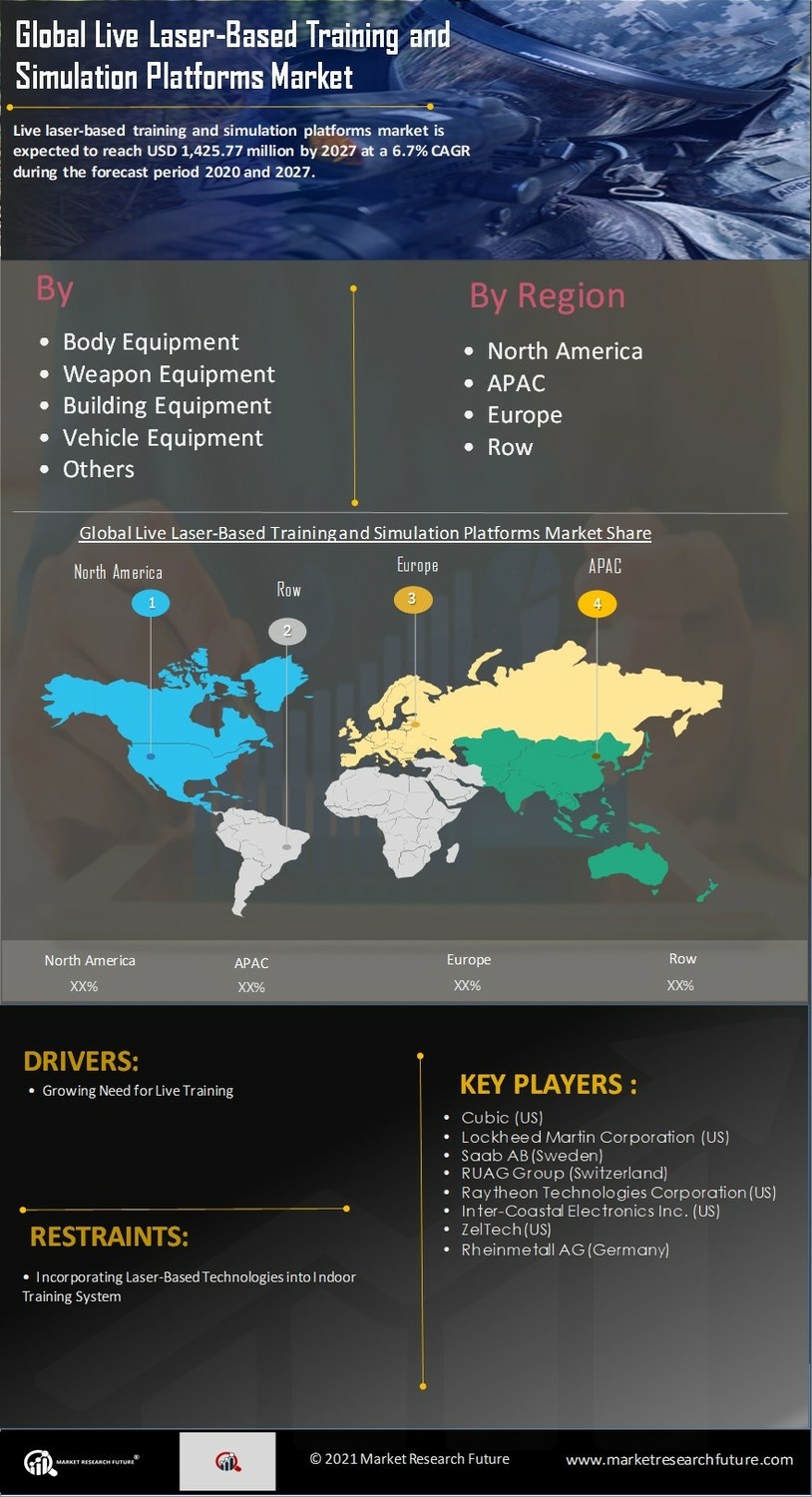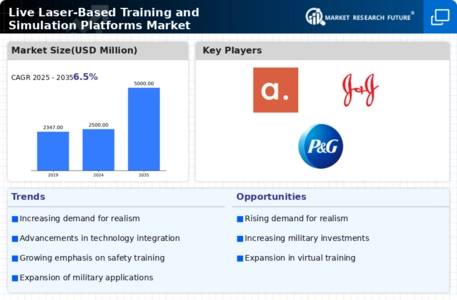Market Growth Projections
The Global Live Laser-Based Training and Simulation Platforms Market Industry is projected to experience substantial growth, with estimates indicating a market size of 5000 USD Million by 2035. This anticipated growth reflects the increasing integration of laser-based systems across various sectors, driven by the need for effective and safe training solutions. As organizations continue to prioritize realistic training environments, the market is likely to expand, supported by advancements in technology and a growing recognition of the benefits these platforms offer. The projected CAGR of 6.5% from 2025 to 2035 further underscores the market's promising outlook.
Rising Adoption in Civilian Sectors
The Global Live Laser-Based Training and Simulation Platforms Market Industry is witnessing a rising adoption of laser-based training solutions in civilian sectors, including healthcare and aviation. These sectors are increasingly recognizing the value of simulation-based training for enhancing skills and decision-making capabilities. For example, healthcare professionals utilize laser-based systems for surgical training, allowing for realistic practice without patient risk. This trend indicates a broader acceptance of simulation technologies beyond traditional military applications, potentially expanding the market's reach and driving growth as organizations seek innovative training methods to improve performance.
Growing Focus on Safety and Risk Mitigation
The Global Live Laser-Based Training and Simulation Platforms Market Industry is significantly influenced by an increasing focus on safety and risk mitigation in training environments. Organizations are prioritizing training methods that reduce the likelihood of accidents and injuries associated with traditional live-fire exercises. Laser-based training systems provide a safer alternative, allowing personnel to engage in realistic scenarios without the inherent dangers of live ammunition. This shift towards safer training practices is likely to drive market growth, as organizations recognize the importance of protecting their personnel while maintaining high training standards.
Increasing Demand for Realistic Training Solutions
The Global Live Laser-Based Training and Simulation Platforms Market Industry experiences a notable surge in demand for realistic training solutions across various sectors, including military, law enforcement, and emergency services. This trend is driven by the need for effective training that minimizes risks associated with live ammunition. For instance, military organizations are increasingly adopting laser-based systems to enhance combat readiness while ensuring safety. The market is projected to reach 2500 USD Million in 2024, reflecting a growing recognition of the benefits these platforms offer in terms of cost-effectiveness and operational efficiency.
Technological Advancements in Simulation Technologies
Technological advancements play a pivotal role in shaping the Global Live Laser-Based Training and Simulation Platforms Market Industry. Innovations in laser technology, augmented reality, and artificial intelligence are enhancing the realism and interactivity of training simulations. For example, the integration of AI algorithms allows for adaptive learning experiences tailored to individual trainees. These advancements not only improve training outcomes but also attract investment from various sectors. As a result, the market is expected to witness a compound annual growth rate (CAGR) of 6.5% from 2025 to 2035, indicating a robust growth trajectory fueled by continuous technological evolution.
Government Initiatives and Funding for Training Programs
Government initiatives and funding aimed at enhancing training programs contribute to the expansion of the Global Live Laser-Based Training and Simulation Platforms Market Industry. Many governments are investing in advanced training technologies to improve the preparedness of their armed forces and law enforcement agencies. For instance, funding for research and development in simulation technologies is becoming increasingly common, enabling the adoption of laser-based systems. This support not only facilitates the integration of innovative training solutions but also ensures that personnel are equipped with the necessary skills to respond effectively in real-world scenarios.
















Leave a Comment